
Range Outlet Wiring
WHILE EXTREME CARE HAS BEEN IMPLEMENTED IN THE PREPARATION OF THIS SELF-HELP DOCUMENT, THE AUTHOR AND/OR PROVIDERS OF THIS DOCUMENT ASSUMES NO RESPONSIBILITY FOR ERRORS OR OMISSIONS, NOR IS ANY LIABILITY ASSUMED FROM THE USE OF THE INFORMATION, CONTAINED IN THIS DOCUMENT, BY THE AUTHOR and / OR PROVIDER.
Wiring a Cooking Range Outlet…
Be sure to use the properly rated electrical box designed to be used with a range receptacle.

Cooking Ranges use a dual pole 40 amp breaker although there is some that use a 50 amp breaker, most that I have seen use a 40 amp breaker. The references in this article are to a 40 amp dual pole breaker.
The two ungrounded conductors [hots] connections at the outlet are interchangeable , but the grounded conductor (neutral) and the equipment grounding conductor can only be connected to one specific place on the outlet.
The breaker used must be a dual (double) 40 amp 220v breaker. 220v breaker meaning that the breaker must be of the type that actually connects to both ungrounded (hot) bus bars in the panel, every other bus lug in the panel is on the opposite phase of the incoming power line. refer to the picture below.
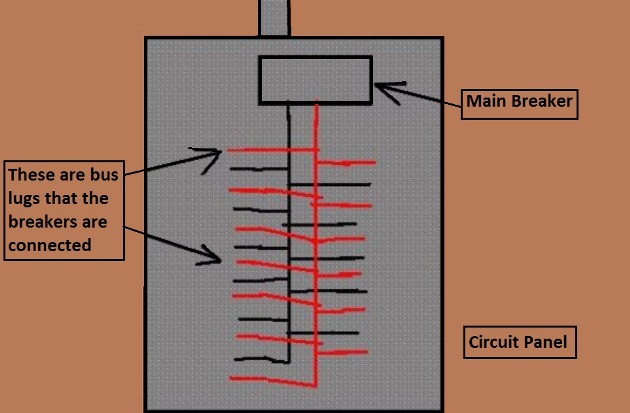
If you were to measure the voltage between a red lug and a black lug (they are not really those colors in the panel, just used here for explanation purposes) , you would measure 220v, if you were to measure between a black bus lug and a equipment ground or neutral bus, you would measure 110v, and the same would hold true if you measure between a red bus lug and the equipment ground or neutral bus.
The equipment grounding bus is a terminal block with many small holes where the bare equipment ground (or green wire) can be connected and tightened into place with a screw.
The neutral bus is a terminal block also with many small holes where the white neutral wire can be connected and tightened into place with a screw.
A Safety Note about Breakers
A breaker designed to be used with 220v, is a dual (double) breaker that actually when mounted into the panel connects to both phases of the incoming power , in other words connects to both the red and black panel lugs (colors in illustration, your panel is not colored but will be alternating between phases from one lug to the next). Sometimes in some panels you may have a set of 4 breakers moulded together and they mount in the panel over the 2 lugs , the middle 2 breakers would be the 2 – 40amp breakers and the outer 2 could be 15 or 20 amp breakers for use in general purpose 110 v circuits. If you ask you local building or electrical supply depot for a dual 40 amp breaker for use in a 220v range circuit for this model/make breaker panel, they will be able to pick out the correct breaker for you. Please note, electrical panels are dangerous to work in, never touch any of the main bus lugs in the panel, they can kill! A breaker can be installed without physically touching the bus lugs, use electricians gloves when working near live power. To be even safer you can switch the main breaker off to de-activate the panel while installing the breaker, use a second person to help with a flashlight if needed.
Also note that a 220 dual breaker has both breakers bridged so that if one of the dual breakers where to trip it will also trip the other side.
The equipment grounding wire connects to the ground bus. Just look where all the other bare ground wires are going in the panel.
The white grounded conductor (neutral) wire gets connected to the neutral bus. Just look where all the other white wires are going in your panel. Should be on its own connection screw hole within the neutral bus.
The red and black wires from range cable connect to the dual 40 amp breaker, one to each of the dual breakers.
For a 40 amp wiring cable use a 3 conductor (4 conductor if you count the equipment grounding conductor) # 8 copper wire cable.
3 wire and 4 wire power cord Connections….
Years ago Cooking ranges was wired with a 3 wire cable in which the grounded conductor (neutral) wire was also bridged to use as an equipment grounding conductor. In more modern times cooking ranges use a 4 wire cable which has a separate equipment grounding conductor which is of course safer.
Older 3 wire Outlet / Cord…
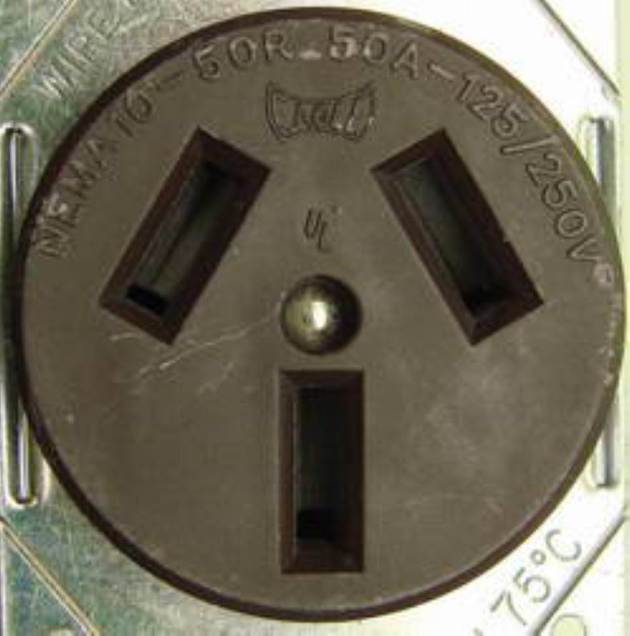
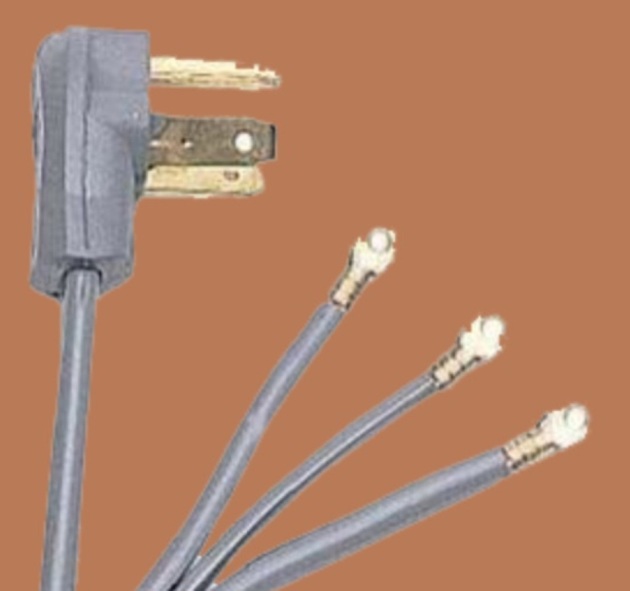
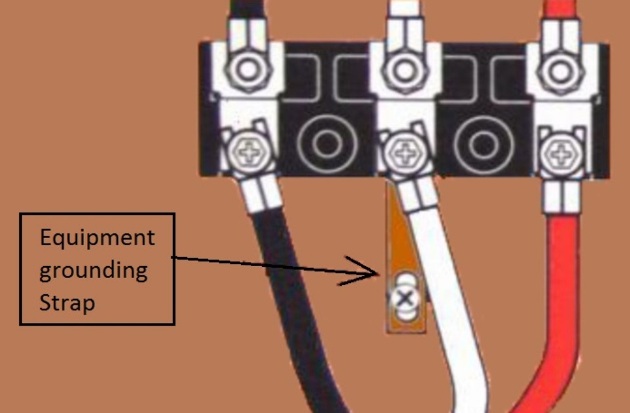
With this older type outlet and cord the connections at the cooking range itself bridged the grounded conductor (neutral) wire to the chassis via a grounding strap bridge. The cord itself may not even be color coded, but the flat 3 wire cord has – Two ungrounded conductors (hots) on the outsides of the power cord and the center wire of the cord is the grounded conductor (neutral). The two ungrounded conductors (hots) are interchangeable.
Modern Day 4 wire Outlet / Cord…
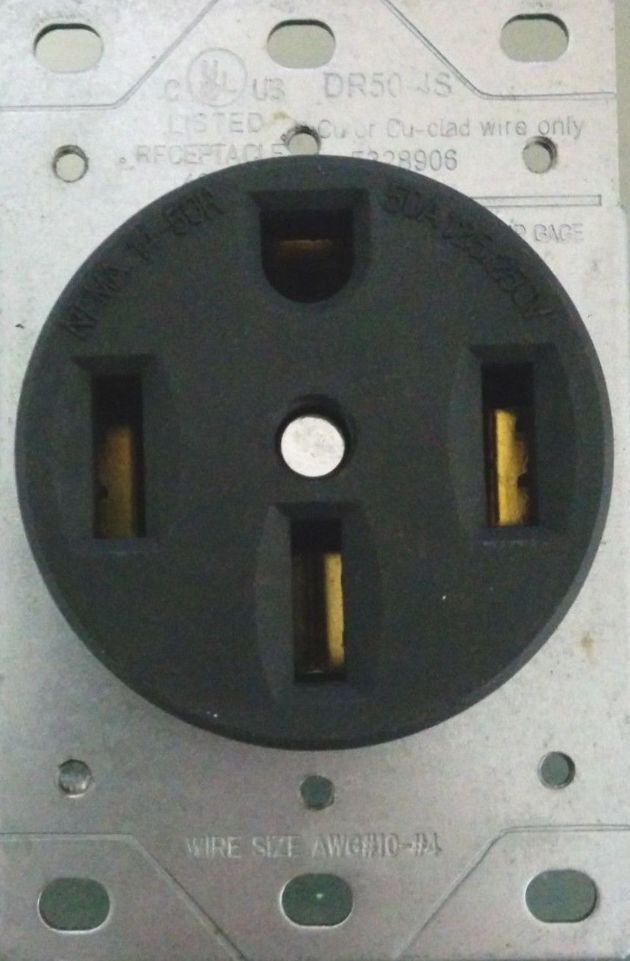
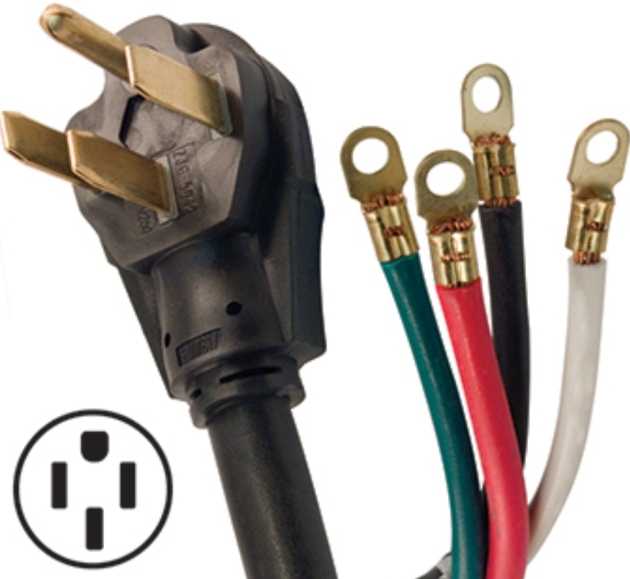
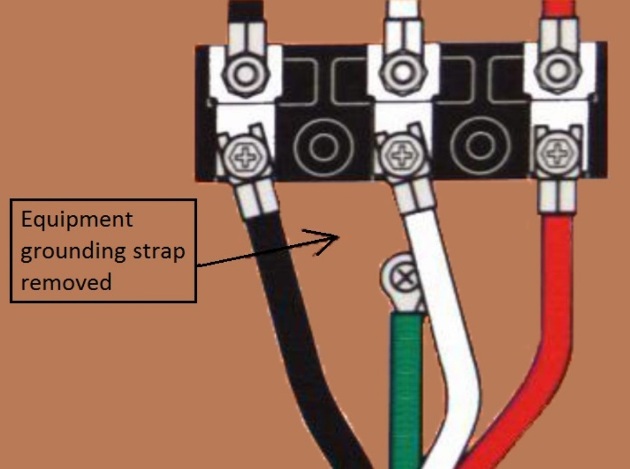
Now with the modern day range outlets / cords they are 4 wire which includes an equipment grounding conductor, and should have a color coded wires, the green wire is the equipment grounding conductor, Red & Black are two ungrounded conductors (hots) and the white is the grounded conductor (neutral), make certain that is no grounding bridge from neutral to chassis as used in the 3 wire system, remove any grounding strap completely.
If you have a need to change the power cord on a 3 wire system I would consider changing over at the same time to a 4 wire system which involves replacing the power cord and outlet.
By: Donald Kerr